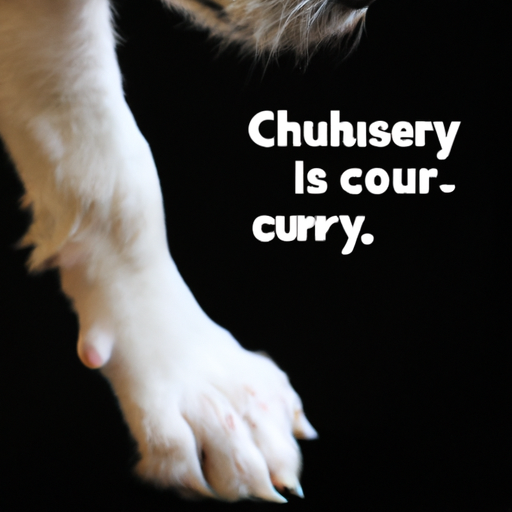Understanding the Behavior of Your Canine Companion
As a caregiver, you often find yourself in a position of decoding the mysterious behaviors of your furry friend. When your dog places their paw on you, it can be puzzling. You may have asked yourself, “What are they trying to communicate?” Well, you’re not alone. This is a common gesture among dogs and it can have various meanings.
1. Seeking Attention
One possibility is that your dog is simply trying to get your attention. Dogs are social creatures and they crave interaction with their human companions. So, when your dog is feeling a bit neglected, they might place their paw on you as if to say, “Hey, look at me!”
- An increase in this behavior might indicate that your dog is not getting enough interaction or stimulation.
- Consider engaging your dog in more activities or games to fulfill their social needs.
2. Asking for Something
Sometimes, dogs will use their paws to ask for something they want. This could be a favorite toy, a tasty treat, or a petting session.
| Possible Requests | Signs to Look For |
|---|---|
| Food/Treat | Pawing near the pantry or refrigerator |
| Toys | Pawing near their toy box |
| Affection | Pawing you directly then rolling over |
This act of pawing can be seen as a form of communication. As caregivers, it’s crucial for us to understand and respond to these cues appropriately.
3. Expressing Affection
Dogs often use their paws to express affection. When your dog places their paw on you, they might be saying, “I love you.” This is a heartwarming gesture that shows the bond between you and your pet.
- This behavior is often accompanied by other signs of affection such as licking, wagging their tail, or leaning into you.
- Respond to this show of affection by petting them or expressing your love in return.
4. Showing Dominance
While less common, some dogs may use pawing as a way to establish dominance. If this behavior is accompanied by aggressive actions, like growling or baring teeth, it’s a sign that your dog is trying to take control.
- It’s essential to address this behavior promptly and consult with a professional dog trainer if necessary.
- Never punish your dog for this behavior, as it can exacerbate the issue.
FAQ’s
Q: What if my dog won’t stop pawing me?
A: It could mean they’re bored or anxious. Try engaging them in activities or consider consulting a vet if the behavior persists.
Q: Can I train my dog to stop pawing?
A: Yes, with patience and consistency, you can train your dog to stop pawing.
Q: Is pawing a sign of aggression?
A: Not always. However, if it’s accompanied by aggressive behaviors like growling, it could be a sign of dominance.
Understanding your dog’s behaviors and responding appropriately can strengthen the bond between you and your pet. Remember, patience and love are key to a harmonious and fulfilling relationship with your furry friend.



